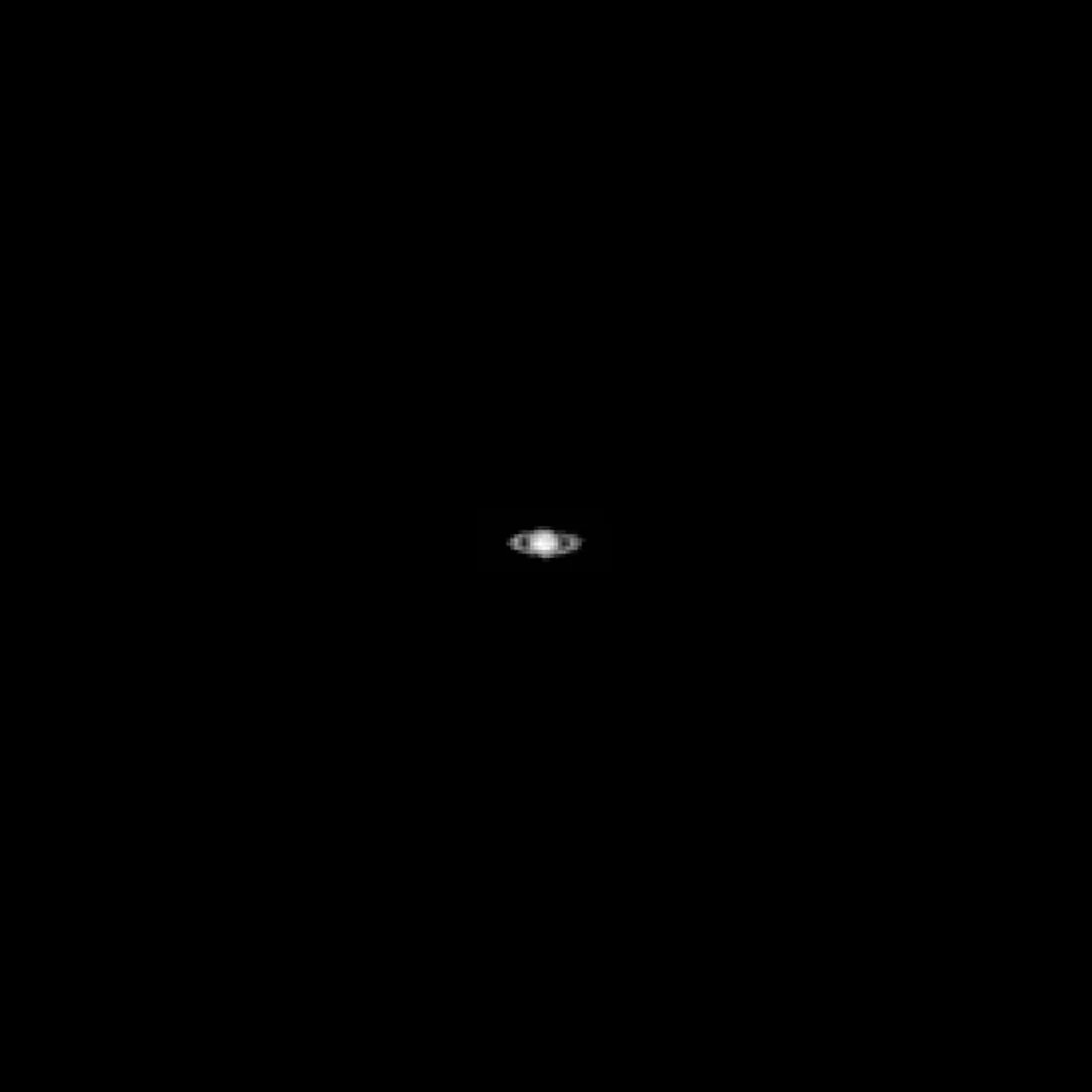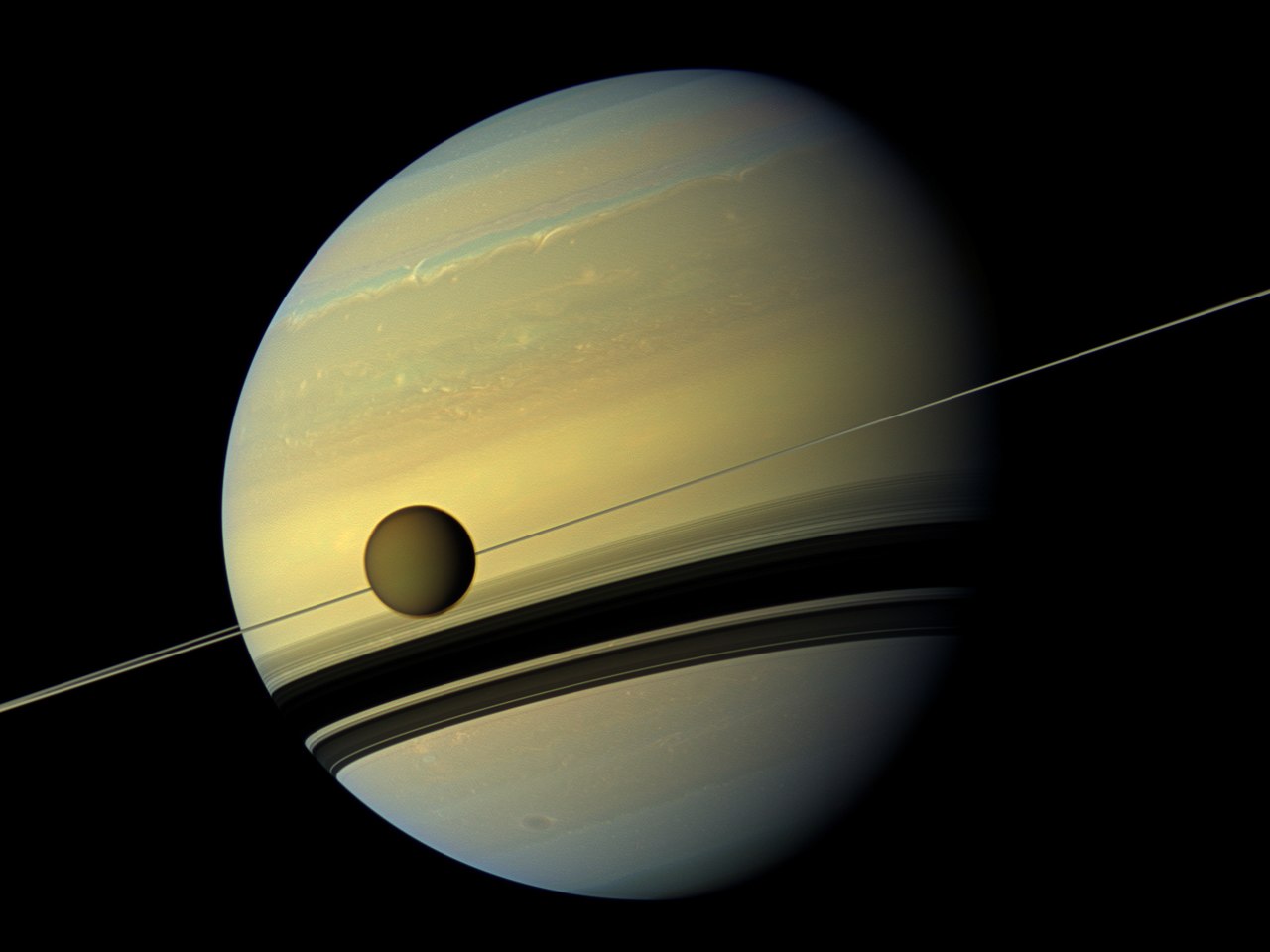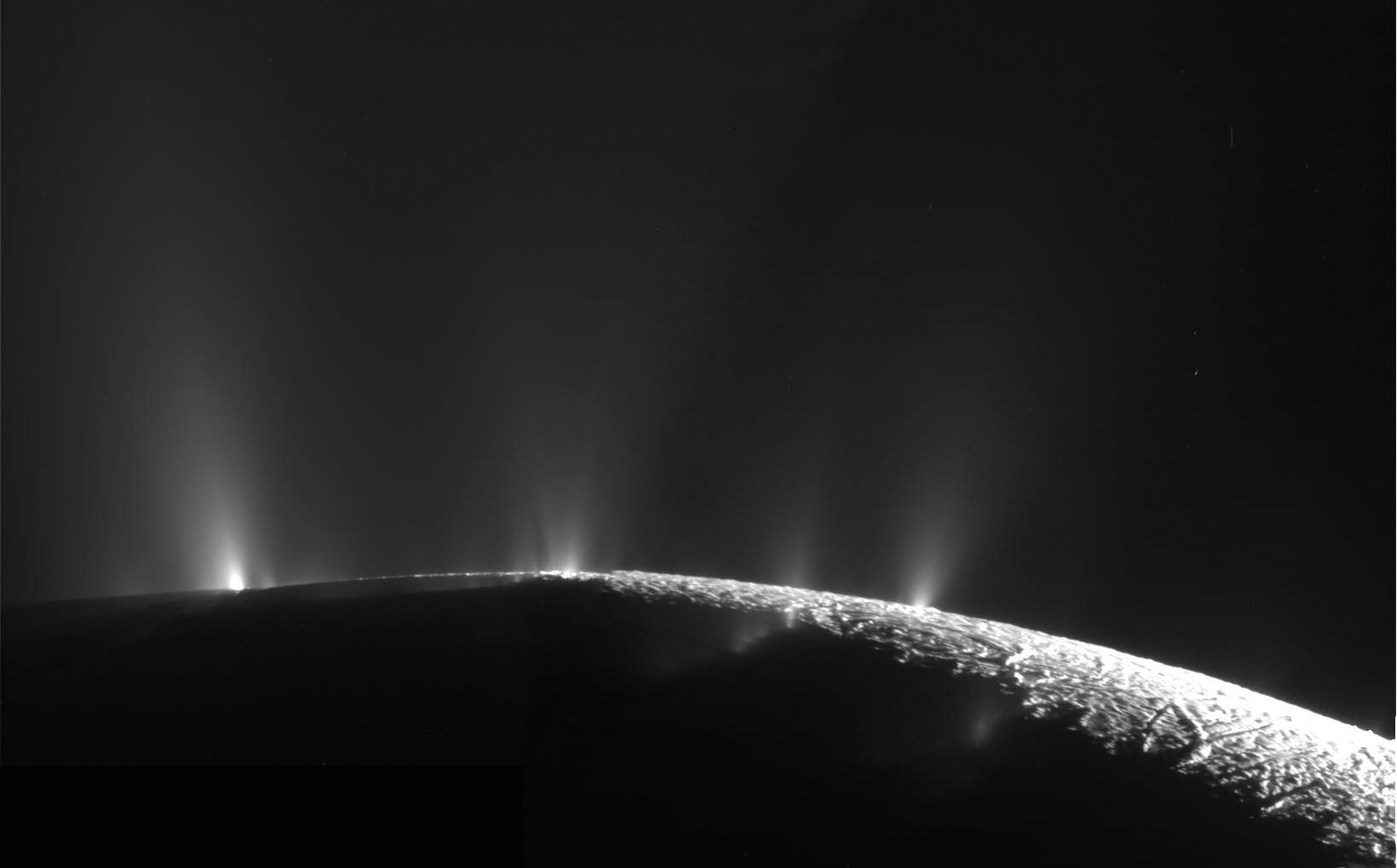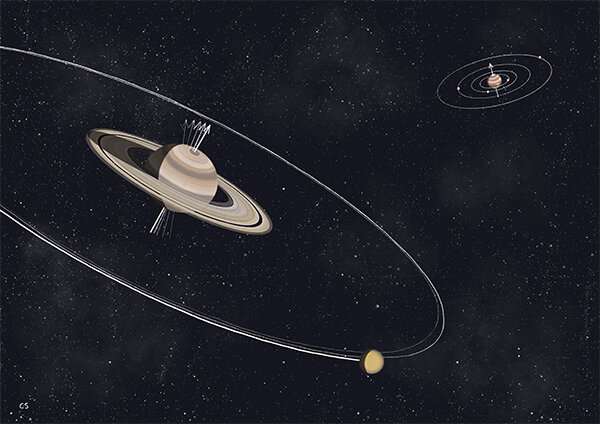Cameras can be finicky – especially ones primarily used for astronomy. When used for a purpose other than their intended one, sometimes they result in horribly muddled or blurry images. However, sometimes an image works out just right and provides a whole new perspective on a familiar scene. That’s what happened recently when the Lunar Reconnaissance Orbiter (LRO) turned one of its cameras toward one of astronomy’s favorite places – Saturn.
Continue reading “A Spacecraft Orbiting the Moon Just Captured an Image of Saturn”Here are Hubble’s 2021 Photos of the Outer Solar System
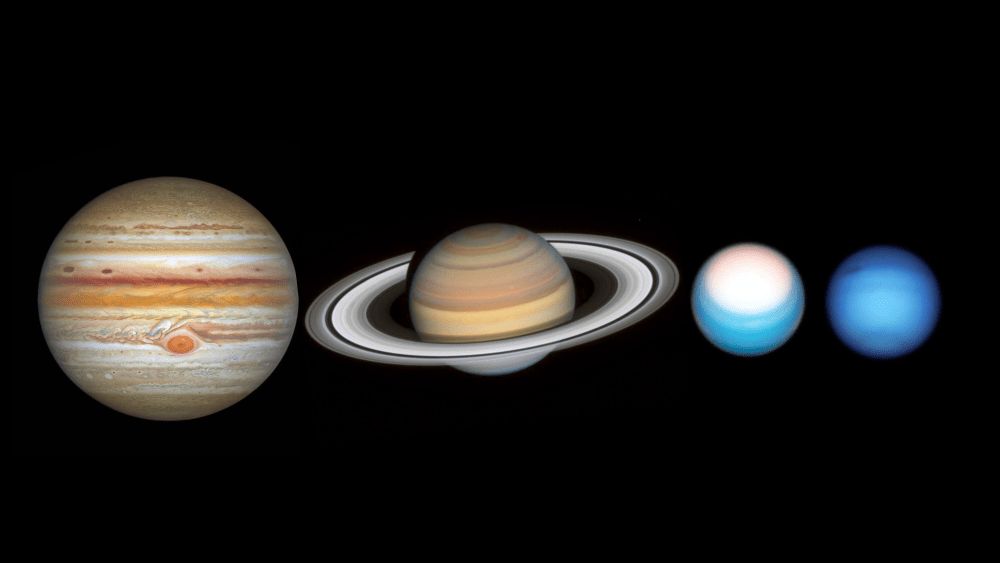
If we had to rely solely on spacecraft to learn about the outer planets, we wouldn’t be making great progress. It takes a massive effort to get a spacecraft to the outer Solar System. But thanks to the Hubble Space Telescope, we can keep tabs on the gas giants without leaving Earth’s orbit.
Continue reading “Here are Hubble’s 2021 Photos of the Outer Solar System”Did Titan Give Saturn its Tilt?
Giant planets like Saturn don’t just tilt over all by themselves: something has to knock them over, or tug on them gravitationally, to push them off axis. Scientists expect that when new planets are born, they form with almost no tilt at all, lining up like spinning tops, with their equators level to the orbital plane in which they circle around their sun.
But no planet in our solar system is perfectly level. Jupiter is the closest, boasting an obliquity (tilt) of just 3.12 degrees. Earth’s obliquity is much more substantive at 23.45 degrees, causing us to experience an annual cycle of seasons as our homeworld wobbles on its axis. Saturn’s tilt is more extreme yet, with an obliquity of 26.73 degrees (though it’s nowhere near as extreme as Uranus, which is practically sideways, spinning at a 97.86-degree angle to its orbital plane).
We can learn a lot from these obliquities.
Continue reading “Did Titan Give Saturn its Tilt?”The Biggest Comet Ever Seen Will get as Close as Saturn in 2031

A mega-comet – potentially the largest ever discovered – is heading from the Oort Cloud towards our direction. Estimated to be 100–200 kilometers across, the unusual celestial wanderer will make its closest approach to the Sun in 2031. However, the closest it will come to Earth is to the orbit of Saturn.
Continue reading “The Biggest Comet Ever Seen Will get as Close as Saturn in 2031”Using Saturn’s Rings to Figure out What’s Inside the Planet
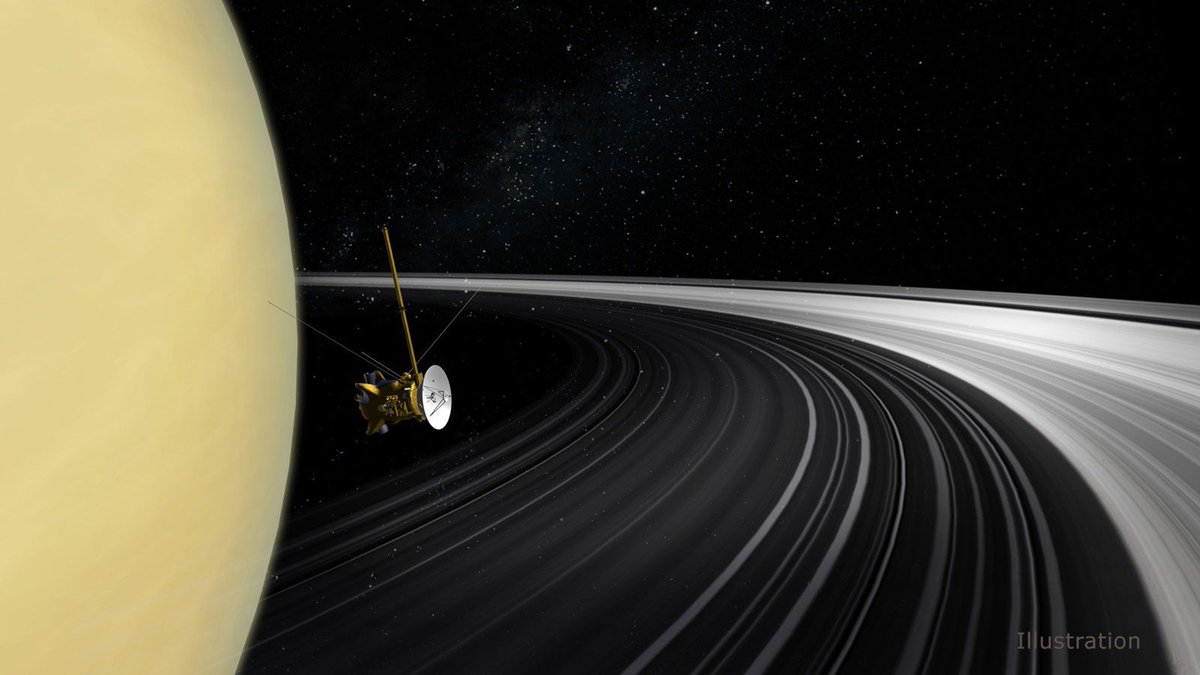
It’s tough to see inside of Saturn, because the atmosphere is opaque to all wavelengths of radiation. We have to rely on computer simulations and physics-based guesswork to try to understand the interior of that giant world. But researchers are becoming more adept at a different technique: looking for the slightest motions in the rings of Saturn.
Continue reading “Using Saturn’s Rings to Figure out What’s Inside the Planet”Cassini Saw Methane in Enceladus’ Plumes. Scientists Don’t Know How it Could be There Without Life
Even though the Cassini mission at Saturn ended nearly four years ago, data from the spacecraft still keeps scientists busy. And the latest research using Cassini’s wealth of data might be the most enticing yet.
Researchers say they’ve detected methane in the plumes of Saturn’s icy moon Enceladus. The process for how the methane is produced is not known at this time, but the study suggests that the surprisingly large amount of methane found are likely coming from activity at hydrothermal vents present on Enceladus’s interior seafloor. These vents could be very similar those found in Earth’s oceans, where microorganisms live, feed on the energy from the vents and produce methane in a process called methanogenesis.
Continue reading “Cassini Saw Methane in Enceladus’ Plumes. Scientists Don’t Know How it Could be There Without Life”Animation Shows how Saturn’s Rings Move at Different Speeds
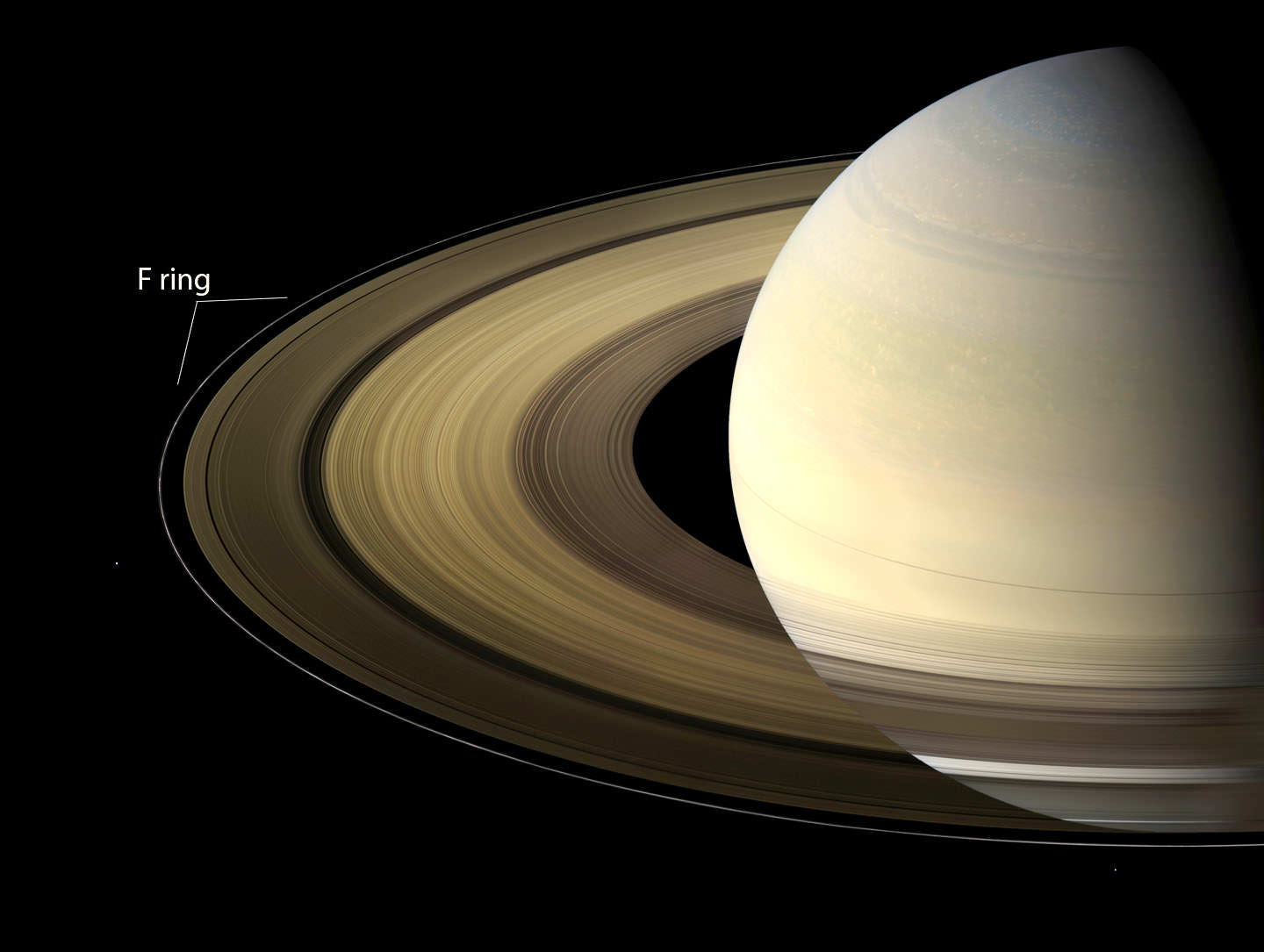
Saturn’s rings are one of the most recognized and revered celestial objects known to the human race. From a distance, they look like a disk of layered crystal or multicolored disks within disks that wrap around Saturn’s hazy umber face. When viewed up close, we see that these rings are actually particles of water ice (from microns to icebergs), as well as silicates, carbon dioxide, and ammonia.
We would also noticed that the rings have some interesting orbital mechanics. In fact, each ring has a different orbit that is the result of its proximity to Saturn (i.e., the closer they are, the faster they orbit). To illustrate what this complex system look like, NASA Fellow Dr. James O’Donoghue created a stunning animation that shows how each of Saturn’s major ring segments (A-Ring to F-Ring) orbit together around the planet.
Continue reading “Animation Shows how Saturn’s Rings Move at Different Speeds”Saturn Got Its Tilt From Its Moons
One of the fundamental tenets of physics is that two objects, now matter how different their size, exert a force on each other. In most cases the size makes a big difference, with the larger objects enacting a much greater force on the smaller one.
However, over long periods of time, even much smaller objects can have an effect on the larger object in the pair. Recently a team of researchers from CNRS, the Sorbonne, and the University of Pisa have found an example of the smaller object, or in this case group of objects, having an outsized impact on the larger one. They have discovered that Saturn’s moons actually caused its famous tilt.
Continue reading “Saturn Got Its Tilt From Its Moons”Simulation Helps Explain Saturn’s Mysterious Hexagon

A new study of the mysterious hexagon-shaped storm at Saturn’s north pole suggests this phenomenon is actually the result of activity occurring across the entire planet.
Continue reading “Simulation Helps Explain Saturn’s Mysterious Hexagon”Sunrises Across the Solar System
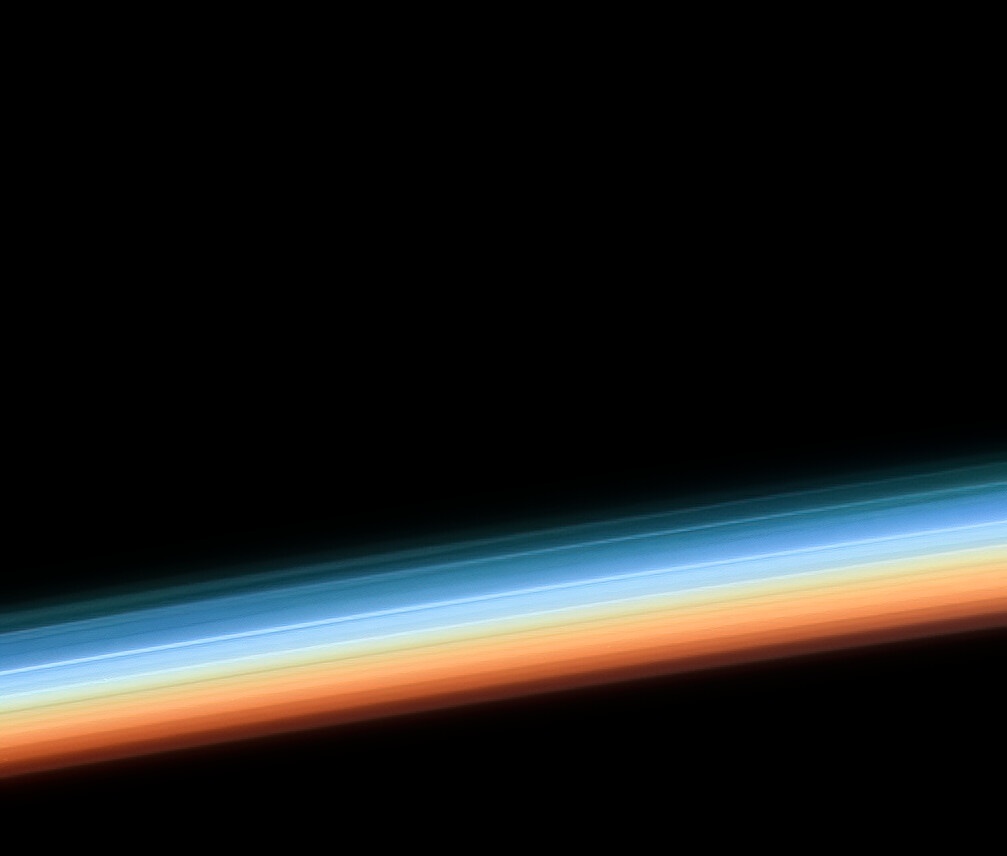
Scientists have learned a lot about the atmospheres on various worlds in our Solar System simply from planetary sunrises or sunsets. Sunlight streaming through the haze of an atmosphere can be separated into its component colors to create spectra, just as prisms do with sunlight. From the spectra, astronomers can interpret the measurements of light to reveal the chemical makeup of an atmosphere.
Continue reading “Sunrises Across the Solar System”
